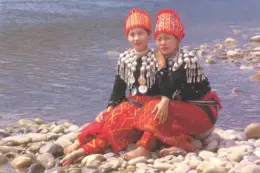A soap opera programme, Life of Strategies, will be broadcasted in Jingpho language to the Kachin people in China. This was after the Kachin people requested for the broadcast. This project was carried out in collaboration with UNESCO and the Yunnan People’s Broadcasting Station in China. The programme was first presented to villagers in 2004 in a bid to gauge their reaction. The programme received a positive response. Much to the sponsor’s surprise, the older women in the villages advocated for more direct portrayal of sexual issues in the program as the best way to teach younger women positive sexual behavior.
Jingpho is sometimes referred to as Kachin language. It is a Tibeto- Burman language. The language is primarily spoken in China in Burma, Myanmar, Kachin and Yunnan provinces. The language is also spoken by the Turung people of India. There are approximately 132,000 people who speak Jingpho. There are 4 subgroups of Jingpho. This includes the Lachi, Laingwa, Zaiwa and Jingpho in Myanmar. Jingpho is written using Latin script. The written language is rarely used nowadays. There are different ways of communicating various messages, so you must understand the culture of the people to understand the various symbolisms. For instance, if a girl wants to marry a girl, the boy will send her 2 chestnut leaves facing each other.
The Jingpho’s have many beliefs. They believe in spirits, which they believe to be superior than human beings. Different clans and villages have their own spirits. The spirits can cause good luck or bad luck to an individual. The Jingpho’s believe that men have 7 souls while women have 6 souls. Out of these souls, only 3 are real and the others are false. When the 3 soul’s are absent then a person dies. Funerals involve burials and the sending away of the spirits. This may necessitate sacrificing of animals such as buffaloes. Spirit sending is usually done to avoid spirits from roaming around and causing trouble. Burial is often done a week after death so as to ensure that the dead person undergoes a complete transition from life to death.
